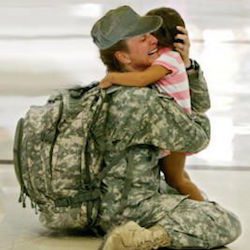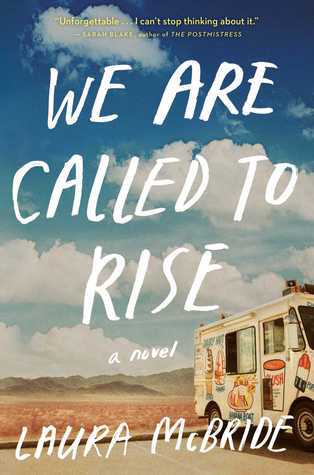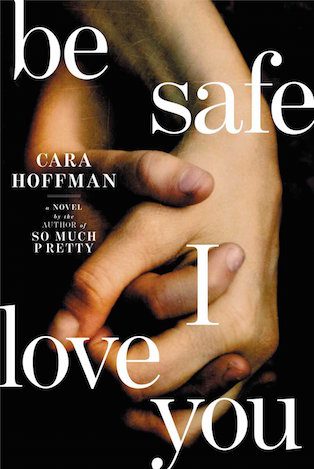
Wartime trauma is a difficult subject to tackle in literature. Some writers don’t discuss it because they never experienced war personally; others dismiss “trauma writing” as something merely heals the writer’s wounds; still others find it problematic to depict those who serve in war as a special class of victim. But if we don’t explore wartime trauma in literature, we will never understand war’s impact in personal or social terms; never understand the incredible variety of responses to trauma, with all its nuances and exceptions.
Many works of fiction written by Iraq and Afghanistan veterans since 2011 depict traumatic wartime events, such the killing of innocent local civilians, the death of close friends, troubles at home, and so on. But recent fiction by veterans has seldom focused on the brokenness or even the personal growth that might follow from trauma.
Fortunately, civilian authors have been more open to depicting the traumatic experiences of these wars after their characters return home. This likely reflects a choice to grapple with aspects of war that the authors understand better than the intricacies and rhythms of combat. In doing so, these civilian authors are able to assign personal meaning to the greater societal costs of war, which is an especially important perspective since few readers know the costs firsthand.
Two recent novels that examine the ways trauma affects life after combat, and life in general, are Laura McBride’s We Are Called to Rise and Cara Hoffman’s Be Safe I Love You. Both are written by civilian authors, both examine the difficulties of human trauma, especially as it relates to wartime, and both show how that trauma interacts with a civilian public that is often ill-equipped to understand it.
 McBride sets We Are Called to Rise in Las Vegas, Nevada in early 2009. Based on actual events, it is arranged around the lives of a four characters from diverse backgrounds and experiences. McBride tells their stories through separate chapters from their individual perspectives, allowing her to show the broader context of their troubled histories and families. That their individual stories must eventually intersect is a given. But more important than their mere intersection is the similarities that their stories share.
McBride sets We Are Called to Rise in Las Vegas, Nevada in early 2009. Based on actual events, it is arranged around the lives of a four characters from diverse backgrounds and experiences. McBride tells their stories through separate chapters from their individual perspectives, allowing her to show the broader context of their troubled histories and families. That their individual stories must eventually intersect is a given. But more important than their mere intersection is the similarities that their stories share.
McBride’s characters endure extraordinary personal trauma. Their lives are marked by neglect, abuse, violence, and other forms of hardship, sometimes all at once. Interestingly for a book that focuses so much on the impact of the current wars, only two of her characters have experienced combat. In both cases the trauma is substantial.
Because several of her characters are related, McBride shows how these hardships can compound generationally and even spread beyond their families. There is a father, an immigrant to Las Vegas, who was jailed for two decades in an Albanian prison for no crime at all, but who is also abusive toward his wife and young children. There is a mother who as a child endured the terrible decisions her mother made, but who was probably overindulgent with her own son. And there is the young man who is raised by his grandmother because his own mother deserted him, and who visits untold fear on a school-aged pen pal who happened to write him during a difficult time. While these personal situations seem impossible on their own, they are further compounded as their distinct stories of trauma and family histories begin to intersect.
Each of McBride’s major characters deals with the loss of a loved one: a mother, a daughter, a dear friend in combat. McBride doesn’t dwell on these particular losses, but they frame the point she is trying to make. The loved ones they lost could not choose to accept the events of the past and keep moving forward, but each characters must move forward, and in doing so, they can also choose to help end the suffering of others.
Because We Are Called to Rise is set in Las Vegas, a city built on the hope of a second chance, McBride is obliged to drive her point home with a gambling metaphor. Avis, a mother and homemaker at the center of the book, makes a devastating decision to do what is right and accept the consequences in order to stay in the game. Here is how she describes the type of people she represents: “we eye the felt, we size up the stickman, we call our bet, we roll our dice.” But We Are Called to Rise isn’t really about betting it all on a hope. It’s about choosing to rise above the past and do the best you can by everyone going forward.
A court scene at the book’s conclusion allows a judge to explain this idea from the bench in the way that a gambling metaphor never could. Nearly all of McBride’s characters are present when the judge describes much of the disorder and destructiveness that he must consider daily in making judgments in his family courtroom. But even with the tragedies he hears, he chooses to believe that it works both ways: “great terror is the result of a thousand small but evil choices, and great good is the outcome of another thousand tiny acts of care.”
The world that McBride creates in We Are Called to Rise is a one where difficult personal circumstances are a part of life, but hope and meaning and fulfillment are available for those who choose to overcome the hardships they have been handed. The world Cara Hoffman creates for the majority of Be Safe I Love You is driven by a much darker reality, one where the future does not provide any form of hope at all, but rather guarantees a destruction that is too powerful to stop.
Set in Watertown, New York, Be Safe I Love You takes place around the week of Christmas sometime during the Iraq war. The town, which is home to the US Army’s 10th Mountain Division, provides a perfect landscape for Hoffman to examine the divide between the distinct civilian and military parts of American society during the time of the all-volunteer military, a divide that figures prominently throughout her story. The civilian residents of Watertown know the military base is there, and they regularly see the young soldiers out in the community, but nothing connects the two cultures beyond geography.
The civilian residents of Watertown know the military base is there, and they regularly see the young soldiers out in the community, but nothing connects the two cultures beyond geography.
Distance is also a factor between Lauren Clay, a young woman home from Iraq, and her family and friends. Lauren surprises them by coming home on terminal leave, a gray area when her military commitment is complete but she is still technically in the military. It is clear from the outset that she has changed in subtle ways, like her aversion to traffic and her distaste for small talk, but the war changed her basic constitution as well. The new Lauren is enlightened with awful realizations that her family does not share. At home, she is an outsider among the people she grew up with, and she is determined not to fall victim to the dangerous outcomes that only she can see.
Lauren sees the world ending. The thirst for oil led to wars, wars led to instability around the world, and both oil and instability put us on a path toward global warming, more wars, and other disasters. Talented young civilians like herself were led into impossible situations only to be dumped back at home and forced to make a choice that no one else had to make: they could become a part of the problem, or they could carve out their own path.
Lauren chooses the latter. She decided to go another direction before she even came home to Watertown, developing a plan that would allow her to reconcile the world that she now understood with her actions during a war she no longer believed in. Her plan is not just for herself, but also for her younger brother, whom she raised as her own son. Together they would escape to a remote Canadian forest. They would learn to survive without the comforts and conveniences that had lulled the rest of society into helplessness. And they would finally see the deconstructed world as she saw it after Iraq.
The conclusions of these books provide contrasting views of the real costs of war, especially the impacts of trauma on the individual and on the broader society. Where We Are Called to Rise expresses a hopeful worldview, it ends with what can only be described as a series of gut-wrenching choices that must be made to end the generational cycles of trauma. And while Be Safe I Love You is plays out against a dark backdrop of guilt and bleakness, Hoffman finds a way to bridge the gap between Lauren and something that resembles hope for the future. The differences in these perspectives are largely based on psychological ability: McBride’s characters are stable enough to recognize that their choices can make a difference in their lives going forward, while Hoffman’s Lauren is not.
You could read either of these books and walk away with totally different but equally valid perspectives on wartime trauma. Those who read We Are Called to Rise might conclude that wartime trauma is just like any other trauma—people have to make hard choices and keep moving forward. Those who read Be Safe I Love You might conclude that all who return from these wars are severely psychologically damaged and capable of Lauren Clay’s destructive delusions. But these books should be considered together and alongside other literary treatments of wartime and of human trauma so the broad range of human responses to war can be better understood. It is a range that should also include those who were lucky enough to grow personally from grappling with their wartime experiences.




